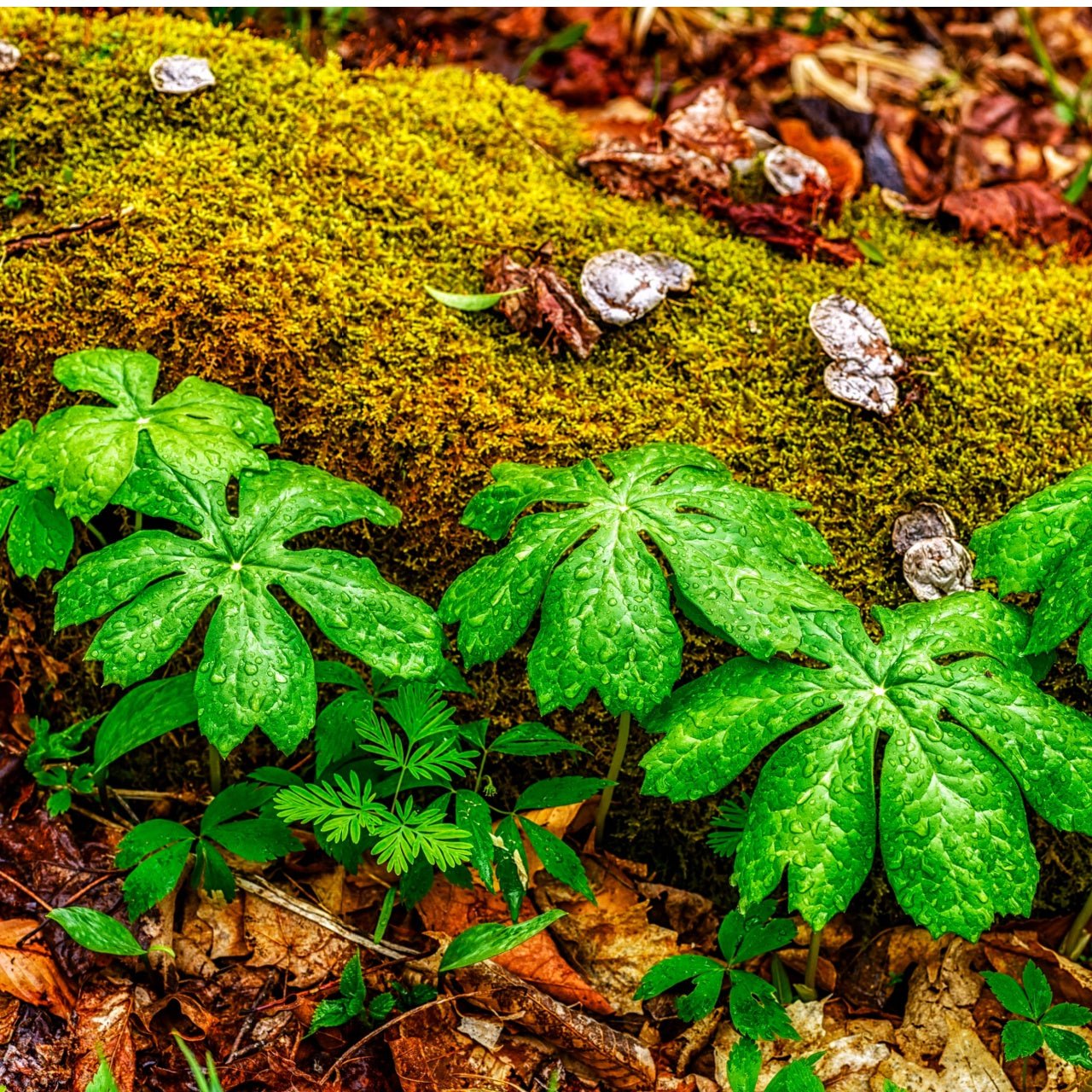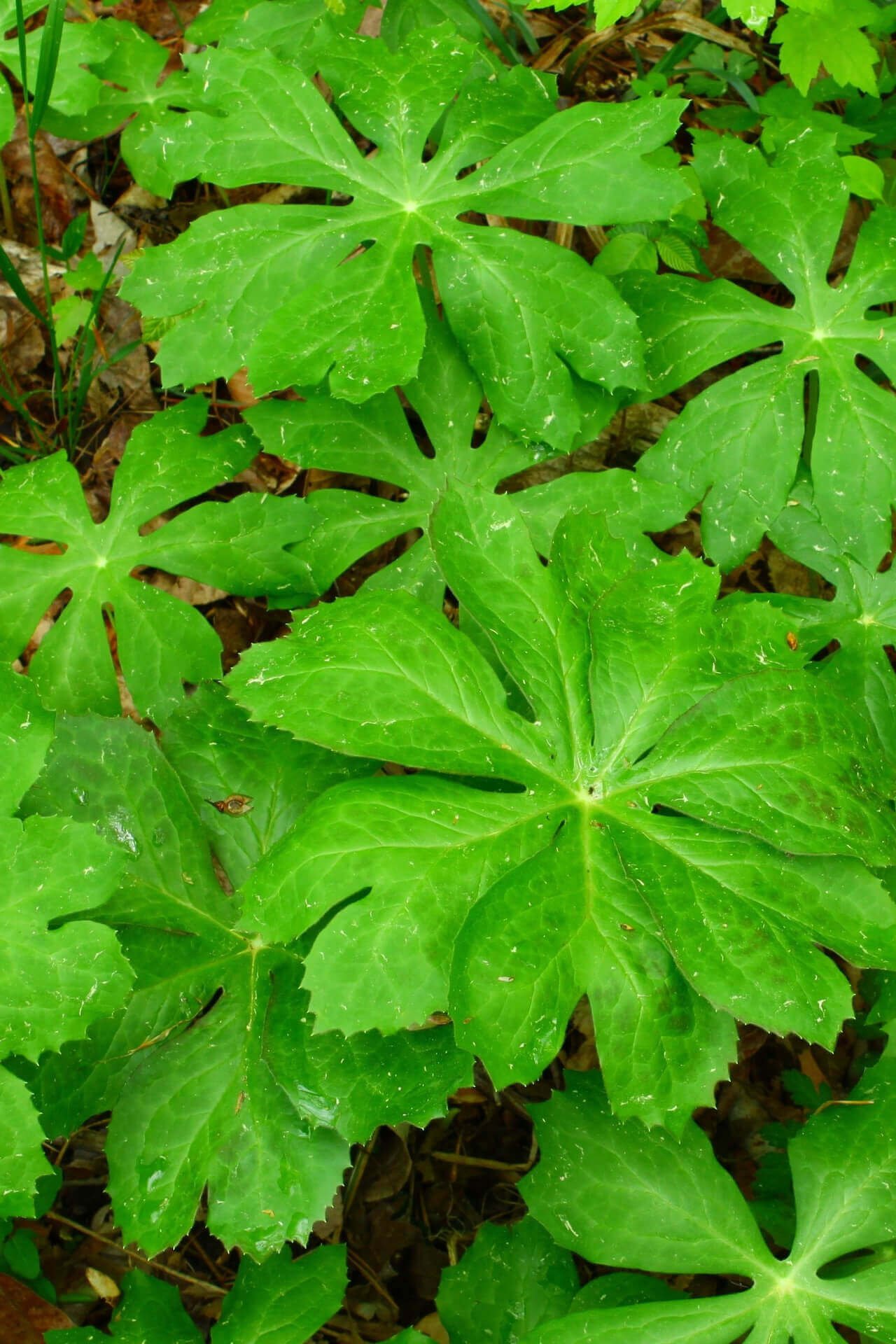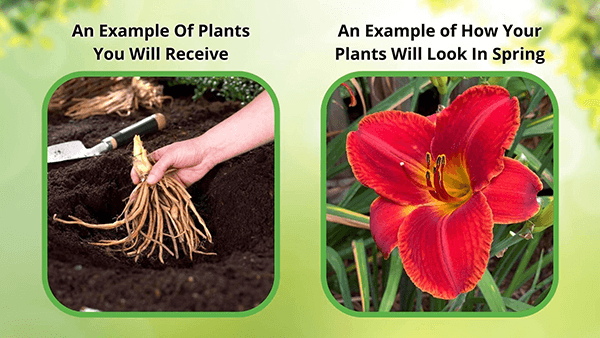




Mayapple
We sell bare root plants - click here to see what you'll receive
Mayapple - Podophyllum peltatum
Mayapple is a woodland perennial plant with distinctive, umbrella-like leaves and a single nodding white flower beneath its foliage. When pollinated, it produces small, edible fruit commonly found in shady forest environments. It is a fascinating native plant in North America with various landscaping benefits. Its unique appearance and adaptability can contribute to outdoor spaces' aesthetic and ecological aspects.
Mayapple Has Stunning Drooping Blooms
There yield drooping blooms ranging from white to rose throughout spring. Their leaves are broad and umbrella-shaped, with only one blossom per leaf axil. The flowers grow up to three inches wide. Each flower boasts white filaments, anywhere from six to nine waxy petals, double the number of stamens, six green petals, and yellow anthers. Because they are transient spring plants, they are only in bloom temporarily. Upon opening, the flower releases its petals. These plants can rise to a foot and a half tall. They produce a golden-colored fruit in late May. The fruit ripens in August.
Provide a Haven for Pollinators With Mayapple
It is easy to spot for pollinators because of its large, prominent blossoms. Its display of six to nine perfectly arranged petals adds to its attractiveness. This, combined with their abundance of pollen, makes them a haven for pollinators like bees and beetles. Their early spring blooming schedule coincides nicely with the pollinating needs of many early-emerging pollinators.
As a perennial, they improve the yard's health and biodiversity yearly. These plants have a natural look that adds shade and moisture to your yard or garden. Their roots can draw water up from deeper soil levels, which helps keep the topsoil from drying out too much. Their leaves unfold and swell when the weather gets warmer, transforming into pleated spirals adorned with delicate hair around their edges. These leaves transform into intricately lobed structures resembling umbrellas, functioning as efficient machines for photosynthesis.
It grows fast and in dense clusters, helping them outcompete many weed species by limiting their access to sunlight, water, and nutrients. Their extensively spreading roots add to their ability to restrict weed growth, and their allelopathic effects inhibit weed germination by acting as a natural herbicide. Once their leaves fall off, they decay and release vital nutrients into the soil, making it healthier and hindering weed growth.
The plant has large, umbrella-shaped leaves which attain up to 12 inches in diameter. During spring, it bears small white flowers located beneath the foliage.
They prefer growing in shaded or partially shaded areas of the garden. They grow well in soil with good drainage and organic matter. It is suited for woodland gardens where it can spread and eventually provide a thick, green ground cover.
They require very little care once they are established. They need very little maintenance - water once or twice a week when the climate is hot and dry - so they are perfect for novice gardeners.
They spread through rhizomes and can create large colonies over some time. With this kind of propagation, they are ideal for erosion control and filling up a large area.
Although they are normally grown in gardens, mayapples can be grown in large containers. Make sure your pot has proper drainage and is placed in a shaded area. Do not forget to provide the plant with soil rich in organic matter to replicate the natural habitat.
| Planting zone | [3, 4, 5, 6, 7, 8] |
|---|---|
| Bloom season | Spring |
| Bloom color | White |
| Height At Maturity | Under 12" |







Mayapple
| Planting zone | [3, 4, 5, 6, 7, 8] |
|---|---|
| Bloom season | Spring |
| Bloom color | White |
| Height At Maturity | Under 12" |

